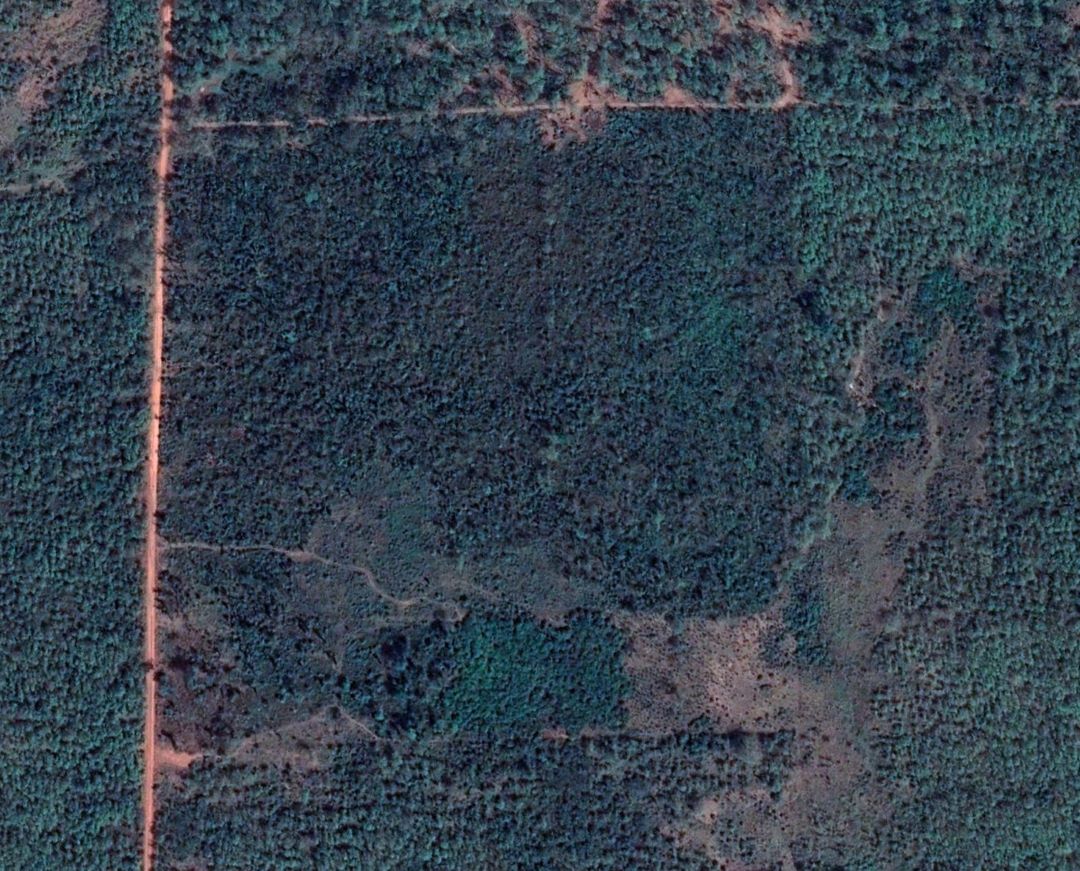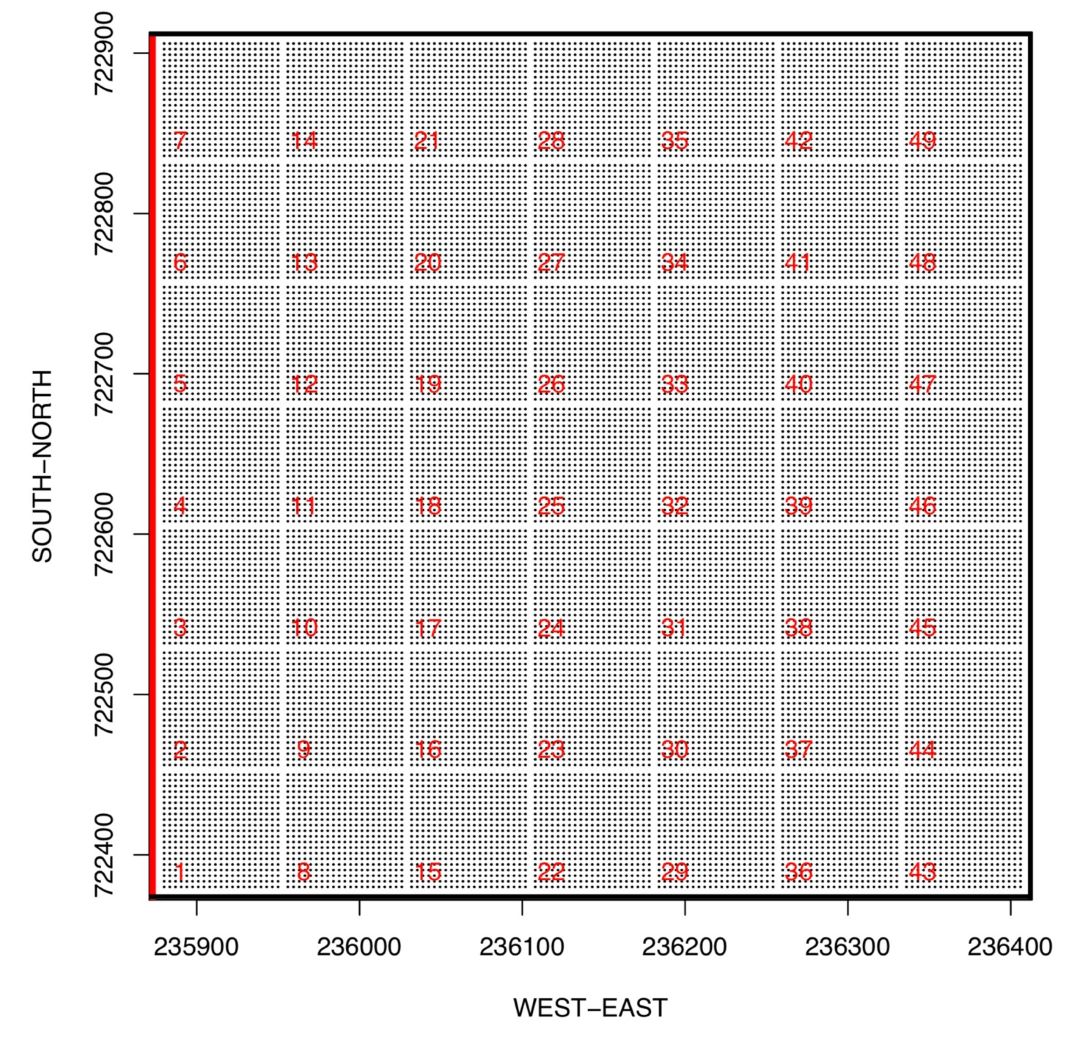ForestInnov (Ivory Coast)
ForestInnov is a 25 ha (49 * 0.5 ha) experiment set up in 2019 in Ivory Coast, West Africa. Sixteen local species are tested in monoculture and over a gradient of functional diversity (2, 4, 8, 16 species mixture).

Design
The experiment consists of 49 plots of 0.5 ha. The plantation density is 3.5m * 3.5m, so that 441 are planted per plot.

Site characteristics
| ForestInnov (Forêt Classée de la Téné) | |
|---|---|
| Country | Ivory Coast |
| Biome | tropical |
| Latitude | 6.52 |
| Longitude | -5.38 |
| Soil type | Luvisols (FAO) |
| Former land use | Plantations of Gmelina |
| Altitude | 202 m |
| Design | stem-wise randomisation |
| Plot shape | square |
| Plot size (m^2) | 5000 m² |
| Plant distance (m) | 3.5 |
| Number of trees planted | 21609 |
| Planting date | 2016 |
| Diversity variables | species richness functional diversity |
| Diversity gradient | 1, 2, 4, 8, 16 species |
| Size species pool | 16 |
| Species pool | Antiaris africana Ceiba pentandra Celtis zenkeri Entandrophragma angolense Eribroma oblongum Gambeya africana Guibourtia ehie Khaya anthotheca Mansonia altissima Milicia excelsa Nesogordonia papaverifera Piptadeniastrum africanum Pycnanthus angolensis Ricinodendron heudelotii Terminalia ivorensis Triplochiton scleroxylon |
| Contact person | Bruno Herault Fabrice Tieoule |
| bruno.herault@cirad.fr tieoulefabrice@gmail.com |
Research
The main goals of this experimental site are the following:
- Set up a tree diversity experiment in West Africa
- Test mixture of indigeneous species that could be used by the National Forest Service for reforestation program
- Demonstrate the economic feasability of an innovative technical itinerary where local farmers are associated to cultivate the field during the first years
Extra information
For extra information you can send an e-mail to the contact persons or explore the publications that utilized data from this experiment.
Research papers
- Depauw L, De Lombaerde E, Dhiedt E, Blondeel H, Abdala-Roberts L, Auge H, Barsoum N, Bauhus J, Chu C, Damtew A, Eisenhauer N, V. Fagundes M, Ganade G, Gendreau-Berthiaume B, Godbold D, Gravel D, Guillemot J, Hajek P, Hector A, Hérault B, Jactel H, Koricheva J, Kreft H, Liu X, Mereu S, Messier C, Muys B, Nock CA, Paquette A, Parker JD, Parker WC, Paterno, GB, Perring MP, Ponette Q, Potvin C, Reich PB, Rewald B, Scherer-Lorenzen M, Schnabel F, Sousa-Silva R, Weih M, Clara Zemp D, Verheyen K, Baeten L 2024 Enhancing Tree Performance Through Species Mixing: Review of a Quarter-Century of TreeDivNet Experiments Reveals Research Gaps and Practical Insights. Current Forestry Reports - https://doi.org/10.1007/s40725-023-00208-y
- FAO 2023 Towards more resilient and diverse planted forests. Unasylva (254)74: 2031/1. Rome. https://doi. org/10.4060/cc8584en
- Messier C, Bauhus J, Sousa-Silva R, Auge H, Baeten L, Barsoum N, Bruelheide H, Caldwell B, Cavender-Bares J, Dhiedt E, Eisenhauer N, Ganade G, Gravel D, Guillemot J, Hall JS, Hector A, Hérault B, Jactel H, Koricheva J, Kreft H, Mereu S, Muys B, Nock CA, Paquette A, Parker JD, Perring MP, Ponette Q, Potvin C, Reich PB, Scherer-Lorenzen M, Schnabel F, Verheyen K, Weih M, Wollni M, Zemp DC 2021 For the sake of resilience and multifunctionality, let’s diversify planted forests! Conservation Letters e12829 - https://doi.org/10.1111/conl.12829